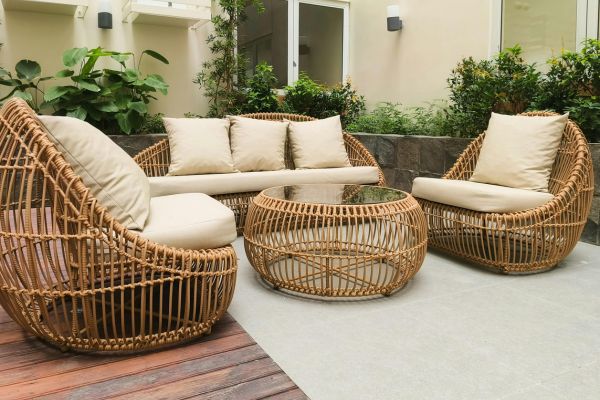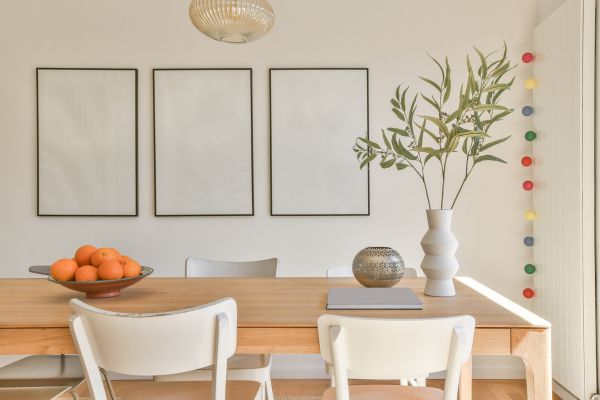Buddhas in Gardens
Statues and images of the Buddha have been placed in the grounds of temples and gardens since ancient times and gardening has strong associations with Buddhism:
It is believed that;
The Soil of the garden represents the fertile ground of Buddha’s Mind. A Sangha (Pali for Buddhist community) is the same as community of plants in the garden. Dhamma (teachings of the Buddha) is the expression of wisdom that is in the Temple – Garden.
If a garden can be regarded as a mind then:
Paths represent the ways to enlightenment. The soil represents the state of our own internal Karma. It’s planting represents fertile and blossoming ideas. The changing seasons represent of the changing moods of the mind. Eastern tradition also suggests that the Buddha should not face south, as this is associated with Yama, a Hindu god and judge of the dead. North is the preferred direction when placing Buddha statues in the garden.
Buddhist gardens
Pure Land Buddhism
The making of Buddhist gardens in Japan was inspired by Pure Land Buddhism movement which originally came from China. It has as its centre piece the Mandala showing the Buddha with a temple and a garden – it has inspired the making of gardens with equivalent symbolism.
Zen Buddhism
Zen Buddhism believes that by making a fine garden can contribute to enlightenment and contentment. This requires skill, artistic judgement and a deep understanding of nature combined with constant attention. So gardening can be a deemed a religious activity.
They should generally have:
- A beautiful place for sitting quietly or for meditation.
- Numerous Paths for the practice of walking meditation.
- A lotus pool containing a Buddha statue.
- A place for the feeding of fish, birds or animals.
Ten of the World’s Most Beautiful Buddhist Gardens
1. Totekiko Temple Gardens, Kyoto Japan
Totekiko is one of the five gardens at the Ryogen,Temple Kyoto, Japan. It was laid in 1958, and is said to be the smallest Japanese rock garden. It is a small enclosed garden, composed of attractive simple boulders placed on raked sand. These rocks are surrounded by concentric gravel circles and are connected by parallel ridges and furrows. The garden briefly receives the sun at around noon each day, and it is sometimes covered by snow in the winter. The garden represents a Zen saying, that the harder a stone is thrown in, the bigger the ripples will be.
The temple also includes three other gardens, Isshi-dan, Koda-tei, and Ryogin-tei – which is a moss covered garden which is claimed to be the oldest in Daitoku-ji.
2. Imperial War Museum Peace Garden, London UK
This beautiful and peaceful area is located in the park in front of the Imperial War Museum in Lambeth. The garden aims to encourage world peace and promote non violence. Its Tibetan name translates as “The Garden of Contemplation”. The design and decoration uses many Buddhist symbols. A tall pillar has in four languages the Dalai Lama’s message about the importance of choosing non-violence.
The garden’s layout is based on the eight spoke Buddhist Wheel representing the Noble Eightfold Path. There are eight stone seats in a circle representing the eight principles in the Noble Eightfold Path. When you sit here you can focus on the centre of the garden. Around the outside of the area is a trellis and plants from the Himalayas. This garden consciously represents the elements of Earth, Fire, Air and Water and the space is often visited by Tibetan Buddhist teachers when visiting London.
3. The Mahabodhi Temple Gardens, India
This temple is built at the actual place where the Buddha reached Enlightenment while sitting under the Bodhi Tree. Almost all activity at the Temple takes place in the large garden surrounding this huge stone spire. This is full of tall, shady trees and little lawns, monuments and marigolds. The holiest place at the Mahabodhi Temple is outdoors under a Bodhi Tree. This Bodhi Tree has been grown from cuttings from a series of earlier Bodhi Trees, which came from the original Bodhi Tree under which Buddha sat and meditated 2,500 years ago. Buddhists from all over the world come to visit this sacred spot
Some people come and sit near the Bodhi Tree on their own and some come in groups of Buddhist pilgrims from the same country. Throughout the Mahabodhi Temple garden you see people worshipping. The Bodhi Tree itself is where all Buddhist meditation began. All around the Mahabodhi Temple you see people practicing Walking Meditation – walking slowly along the paths which lead round the Temple garden always doing so in a clockwise direction.
On the east side of the Temple is a beautiful Meditation Park having many winding paths for walking meditation and little marble platforms, where people can sit and meditate. This garden is filled with the sounds from thousands of brown mynah birds. On the south side of the Mahabodhi Temple is a large, rectangular Lotus Pool. In the centre of the pool is a statue of Buddha. The Lotus Pool is full of large catfish.
4. Ryoan-ji Temple Gardens – The Temple of the Peaceful Dragon, Kyoto Japan
This is a Zen temple located in northwest Kyoto, Japan. The temple is one of the Historic Monuments of Kyoto and is a UNESCO World Heritage Site featuring a dry landscape rock garden. The dry landscape rock garden was built in the late 13th Century. It consists of raked gravel and fifteen moss covered boulders placed so that, when looking at the garden from any angle only fourteen of the boulders are visible at one time.
5. Sigiriya Temple, Sri Lanka
This is a World Heritage Site and is sometimes said to have the oldest surviving garden in Asia. It was originally the garden of a residential palace later becoming the garden of a Mahayana Buddhist monastery. The present layout of Sigiriya is believed to date from in the 5th century AD.
6. Lumbini, India
This was the site of the Buddha’s birth. The site was re-discovered in 1896.The sacred pool had earth banks at the time of its re-discovery. It now has a paved margin and steps – but it remains a place of exceptional calm. The garden also includes a bathing tank of the Sakyas where the water is bright and clear as a mirror and its surface covered with a mixture of flowers. This is where the Bodhisattva was born. In 1997 it became a UNESCO World Heritage Site.
7. Kagyu Samyé Ling Monastery, Scotland
Kagyu Samyé Ling Monastery and Tibetan Centre is a Tibetan Buddhist complex located at Eskdalemuir, near Dumfries,Scotland. The Tara Healing Garden preserves and propagates medicinal herbs native to Tibet. The grounds feature a Garden of World Peace, an organic kitchen garden, with greenhouses a vinery, peach-house and a traditional herb garden (TaraHealingGarden) which preserves and propagates medicinal herbs native to Tibet. The garden is surrounded by woodland and arable land grazed by a herd of Yak.
8. Secret Buddha Garden, Ko Samui, Thailand
This beautiful spot on Ko Samui is one of the most important tourist attractions of Ko Samui. It was designed and built by a fruit farmer in 1976 called Nim Thongsuk, who was 77 when he started building the garden. This has also resulted in another name for the area – “Uncle Nimm’s Garden”. It is surrounded by jungles and rocky hills and is slightly difficult to find as it lies high on the mountain overlooking the island. The entire garden is filled with sculptures and statues depicting humans as well as various gods and Buddhas.
9. The Peace Pagoda and Peace Temple Gardens, Milton Keynes, UK
Founded by Nichidatsu Fujii, a Buddhist monk from Japan who worked with Gandhi on finding peaceful ways of opposing government’s wrongdoing. After the Second World War, he campaigned strongly against with nuclear weapons. He lived to be 100 and his movement built 80 Peace Pagodas and Peace Gardens all round the world. In the beautiful gardens surrounding the pagoda are a thousand cherry trees and cedars planted to remind us of the victims of all wars.
To left of the pagoda is a small Japanese garden of rocks, moss and bushes and a water lily pond full of carp and to the right of the Temple is a little moss garden. Behind the Temple is a typical Zen garden of rocks and gravel. Finally at the rear of the Zen garden is a stupa.
10. Wenshu Monastery Gardens, Chengdu, China
This Zen Buddhist monastery was built between 605 – 617 during the period of the Tang Dynasty and is the best-preserved temple in Chengdu. This Buddhist Temple is set within splendid landscaped gardens containing examples of religious Chinese architecture as well as a superb vegetarian restaurant.
The landscaped park within the Wenshu Monastery are very beautiful and serene and are beautifully maintained and clean and has many trees and shrubs as well as spectacular water features. The courtyards and gardens seem to melt into each other, making for a very quiet and contemplative environment.


